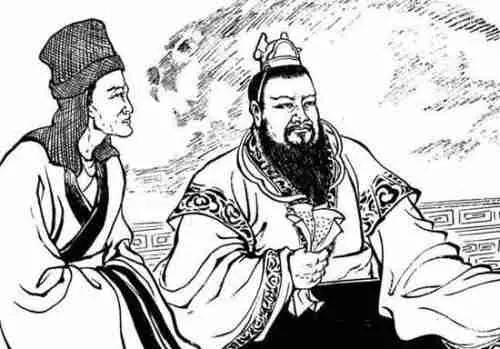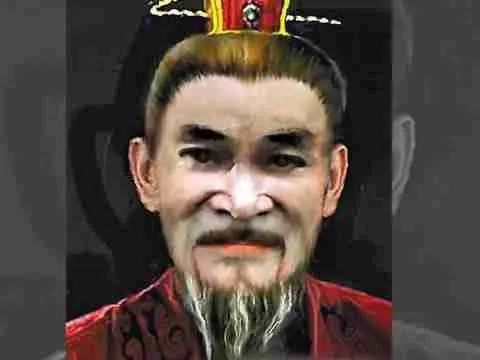Cao Cao is one of the well-known names in ancient Chinese history who is recorded to have lived between c.155 and 220CE. Cao Cao is renowned for being a military (political) dictator that lived in China at the tail end of the leadership Han.
Contrary to popular belief, Cao Cao wasn’t just a warlord as he showed support for the puppet emperor while also governing a large part of Northern region of China. Unfortunately, Cao Cao’s efforts to unite China failed. He was, however, the founder of the large Wei estate, and afterward, introduced several administrative changes in Wei, which included a new social and political ranking system, as well as land reforms.
His ruthless objective in the attempt to recapture Han Empire’s long lost glory, along with the hand he played in manipulating the Han’s imperial court, not to mention his associations with the unsavory political names and intrigues, all played a role in giving him an large but unspecified reputation that has remained darkened since he was portrayed as a villain in the 14th Century CE production dubbed the “Romance of the Three Kingdoms”.
Cao Cao’s Family and Early Life

Cao Cao’s early life is quite sketchy and largely disputed, with facts about the man making it almost impossible to separate the man from the legend.
But what is known about this pragmatic military leader is that he was born in 155CE and was Cao Song and Lady Ding’s son. His father, Cao Song, was Cao Teng’s adopted son. During Han Dynasty’s reign, Cao Teng was one of the important and influential persons and also one of the most powerful eunuchs at the Han Dynasty’s court. So, it is believed that this association with eunuchs led to strings being pulled into the imperial politics and behind the scene-actions, hence Cao Cao’s rather meteoric rise.
It is believed that there is a possibility that Cao Cao could have been adopted by Xiabou, which was an influential family from the Pei District.
Cao Cao also had several children, but only two are quite famous – Cao Zhi and Cao Pi.
What Is The Meaning Of Cao Cao?
Well, Cao Cao is just a name. But Cao is his family name. As noted above, Cao Song was his father. The name Cao has no real meaning attached to it. And the second Cao is his given name that translates loosely to Virtuous conduct.
Interestingly, his given name, Cao, could also mean f*ck, although this is said in a different accent altogether.
What Is Cao Cao Known For?
The meaning of his name aside, Cao Cao was known for a number of things, and the most notable ones are covered here. They are as follows:
- The Yellow Turban Rebellion

This is the first and the most notable thing that Cao Cao is known for. It was also his first role as the police chief and Commandant at Luoyang, which was the capital of the Han Dynasty during their reign in 170CE. Even here, he had already established a personality and a reputation that pegged him as an ardent stickler of the laws and that he was not afraid of the challenges faced by the rich and the famous. He would become even more famous in the 2nd Century CE’s 2nd half when he started the Yellow Turban Rebellion. This rebellion got its name from the fact that the protagonists would wear turbans in colors that represent the earth, and they hoped that their turbans had the power to put out fires – fire was Han Dynasty’s element.
Interestingly, the Yellow Turban was a religious (cultural) movement believed to have originated from Tibet. They also had close associations with Taoist beliefs. They also became popular because they promoted aid peasants while also criticizing the dynasty’s discriminating actions and policies against the poor and women – these were rife issues in the Chinese societies then.
So, later, this cult would turn into one of the biggest military rebellions. This was an ironic move because the leader of the group, Zhang Jue, was all about the Great Peace. This rebellion was quite strong in the Eastern part of China, and their rebels coordinated several uprisings and rebellions across China, especially in 184CE. These attacks included many directed towards the local government.
As the uprisings continued and the Han Dynasty kept fighting back, uprisings continued across the whole country. There were many small rival groups held by warlords, rebels, and even the regional governors who still recognized the leadership of the Han Dynasty. All these led to a great deal of confusion, deprivation, and constant Warring. Through all these, Cao Cao was able to put down most of the rebellions other than the Yellow Turban Rebellion. It’s been noted that the Yellow Tubman rebellion was squashed brutally by Cao Cao’s army, with Zhang Jue either executed or killed. This rebellion would consequently rumble under the new eastern China leadership, but it was eventually destroyed in 215CE by another one of Cao Cao forces.
After several attacks, the Yellow Turbans and other rebels clashed, and all the warring incited a civil war, with the city of Luoyang ransacked in 189CE.
But after many setbacks, Cao Cao was finally able to establish and consider himself the most powerful governor of the Yan Province in 196CE. His government was headquartered in Yingchuan’s Xu (Henan Province). This would make him China’s most powerful warlord, especially after he won his battle against the rival warlord called Yuan Shao during the Guandu Battle between 199 and 200CE.
Following this win, Cao Cao would go on to win many other impressive titles as he was recognized as China’s most powerful warlord in the Han Dynasty’s court. These titles include the Director of Retainers, Marquis, and Excellency of Works.
And by the year 205CE, Cao Cao had taken over the government’s reigns as the emperor was left to stand as more of a token or a gesture to the past traditions. To make his move, he made Ye his government’s capital, taking over several privileges of the previous emperors while giving himself the chengxiang title (Imperial Chancellor) in 208CE. Later in 213CE, he gave himself the title The Duke of Wei, then the King of Wei in 216CE.
- Reforms
Cao Cao also made a number of administrative reforms that reinforced the further centralization of the Chinese government to ensure that he had far-reaching control of his empire.